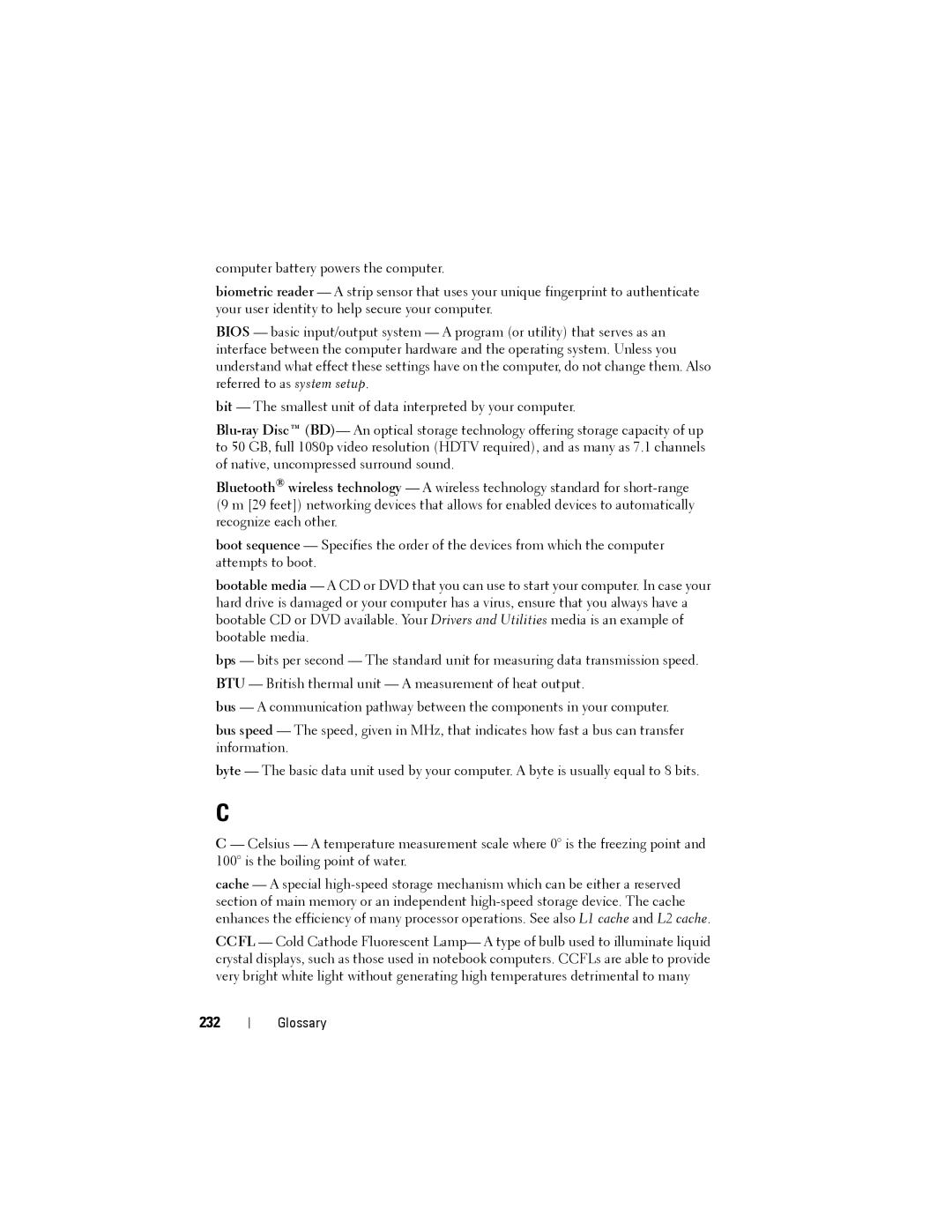computer battery powers the computer.
biometric reader — A strip sensor that uses your unique fingerprint to authenticate your user identity to help secure your computer.
BIOS — basic input/output system — A program (or utility) that serves as an interface between the computer hardware and the operating system. Unless you understand what effect these settings have on the computer, do not change them. Also referred to as system setup.
bit — The smallest unit of data interpreted by your computer.
Bluetooth® wireless technology — A wireless technology standard for
boot sequence — Specifies the order of the devices from which the computer attempts to boot.
bootable media — A CD or DVD that you can use to start your computer. In case your hard drive is damaged or your computer has a virus, ensure that you always have a bootable CD or DVD available. Your Drivers and Utilities media is an example of bootable media.
bps — bits per second — The standard unit for measuring data transmission speed. BTU — British thermal unit — A measurement of heat output.
bus — A communication pathway between the components in your computer.
bus speed — The speed, given in MHz, that indicates how fast a bus can transfer information.
byte — The basic data unit used by your computer. A byte is usually equal to 8 bits.
C
C — Celsius — A temperature measurement scale where 0° is the freezing point and 100° is the boiling point of water.
cache — A special
CCFL — Cold Cathode Fluorescent Lamp— A type of bulb used to illuminate liquid crystal displays, such as those used in notebook computers. CCFLs are able to provide very bright white light without generating high temperatures detrimental to many
232
Glossary
